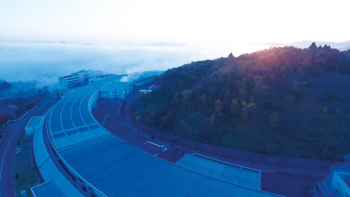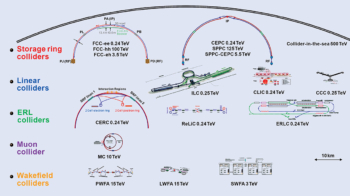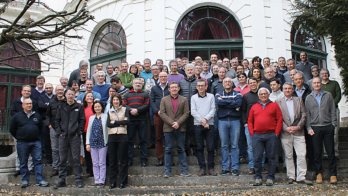The goal of a proton–antiproton collider with both beams polarized is coming closer.
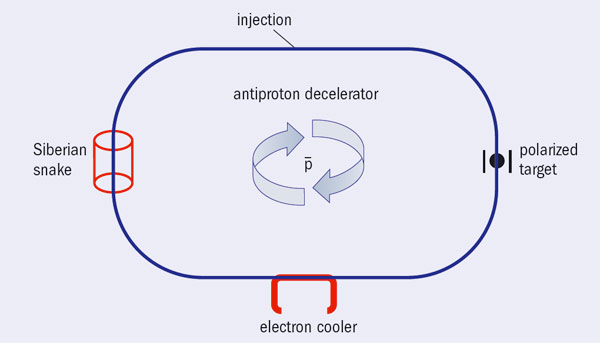
The physics potential for QCD experiments with high-energy polarized antiprotons is enormous but until now many experiments have been impossible owing to the lack of a high-luminosity beam. This situation could change with the advent of a stored beam of polarized antiprotons and the realization of a double-polarized, high-luminosity antiproton–proton collider. The collaboration for Polarized Antiproton Experiments (PAX) has already formulated the physics programme that would be possible with such a facility (PAX collaboration 2006). Following studies with proton beams, it is now planning to make the first measurements with polarized beams at CERN’s Antiproton Decelerator (AD), which is currently the world’s only stand-alone antiproton storage facility.
The experimental approach adopted by the PAX collaboration to produce a beam of polarized antiprotons is based on spin filtering, a technique that exploits the spin dependence of the strong interaction (Oellers et al. 2009). The total cross-section, σ, depends on the relative orientation of the spins of the colliding particles, i.e. σ(↑↑)≠σ(↑↓). The method was shown to work in the 1990s with protons in a 23 MeV beam stored in the Heidelberg Test Storage Ring, which passed through a polarized hydrogen gas target (Rathmann et al. 1993).
In contrast to the proton–proton system, the experimental basis for predicting the build-up of polarization in a stored antiproton beam by spin filtering is practically nonexistent. It is therefore a high priority to perform a series of dedicated spin-filtering experiments using stored antiprotons together with a polarized target, which the PAX collaboration is aiming to undertake at the AD ring at CERN (PAX collaboration 2009b). Figure 1 illustrates schematically the proposed experimental set-up.
Expected build-up
The AD is a unique facility at which stored antiprotons in the appropriate energy range are available with characteristics that meet the requirements for the first antiproton polarization build-up studies. In 2009, the European Research Council awarded an Advanced Grant to the Jülich group to pursue these studies at the AD. Once an experimental proton–antiproton data base is available, work can begin to design a dedicated polarized antiproton ring.
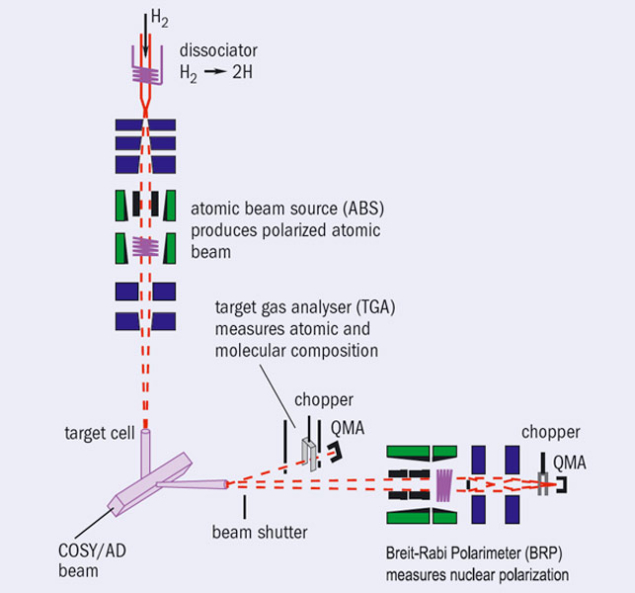
The Jülich group has made predictions for the spin-dependent cross-sections for the expected build-up of polarization in an antiproton beam (PAX collaboration 2009). In addition, a group from the Budker Institute for Nuclear Physics, Novosibirsk, has recently generated estimates on the basis of a Nijmegen proton–antiproton potential. These indicate that antiproton beam polarizations of 0.15–0.20 (spin filtering with transverse target orientation) and 0.35–0.40 (longitudinal) might be expected (Dmitriev et al. 2010).
For efficient commissioning of the equipment required for measurements at the AD, the PAX collaboration is preparing polarization build-up studies using stored protons at the Cooler Synchrotron (COSY) at Jülich (PAX collaboration 2009a). Because the spin-dependence of the proton–proton interaction is well known at energies where electron cooling is available at COSY (up to 130 MeV), details of the polarization build-up process can also be studied.
Beautiful techniques
The polarized internal target (figure 2), consisting of an atomic beam source and a Breit-Rabi type target polarimeter, has been successfully operated with an openable storage cell. Such an openable cell constitutes an important development for the investigations with stored antiprotons at the AD: when the beam is injected into the AD with a momentum of around 3.5 GeV/c, any restriction of the machine acceptance reduces the number of stored antiprotons during the spin-filtering studies. Only after cooling and deceleration to the experimental energies of interest, around 50–500 MeV, would the storage cell be closed.
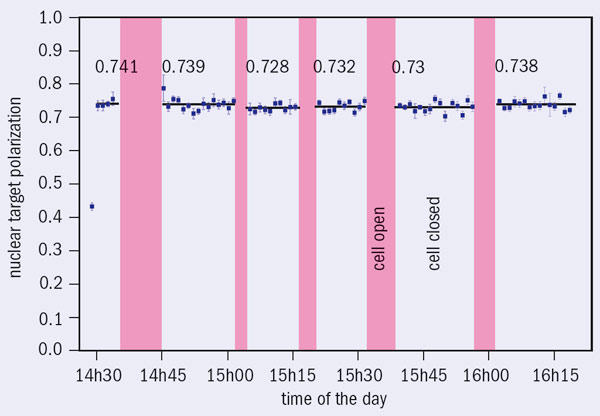
The storage-cell technique works beautifully, as figure 3 shows, with the target polarization unaffected by the opening and closing of the storage cell (Barschel 2010). This constitutes a major milestone because for the first time, both high polarization and density have been achieved with an openable storage cell. While this is crucial for investigations of the spin-dependence of the proton–antiproton interaction at the AD, many other experiments employing internal storage-cell targets can also benefit from this development.

The quadrupole magnets for the low-β insertion of PAX at COSY were installed during the summer shutdown in 2009. During beam-time in early 2010, the β-functions at the location of the PAX quadrupoles were measured for the non-zero dispersion setting, by varying the magnet currents. The calculated and measured values at the location of the quadrupoles match nicely, as figure 4 shows. The model calculations suggest that β-functions of βx around 0.38 m and βy around 0.36 m were reached. The measured beam lifetimes at COSY did not depend on whether the low-β section was powered on or not. More accurate values of βx and βy at the centre of the storage cell will be determined once the target chamber has been installed later this year.
In the second half of 2010, the PAX collaboration would like to perform machine studies at COSY to obtain a better insight into the actual limitations of the beam lifetime. The plan is then to carry out the first spin-filtering measurements at COSY with transversely polarized protons early in 2011.
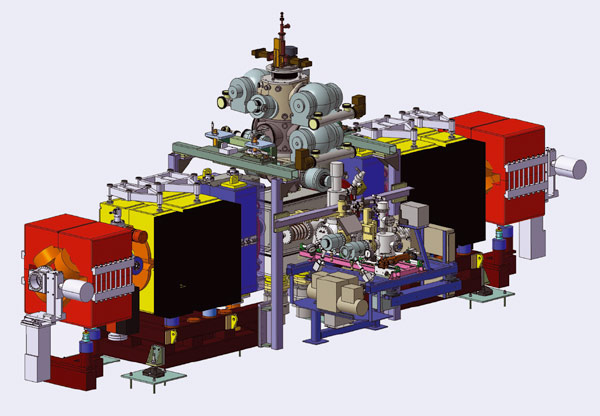
The installation at the AD will consist of a set of additional quadrupole magnets, the internal target and a detection system surrounding the openable storage cell (figure 5). The PAX proposal for the AD is currently awaiting approval (PAX collaboration 2009b). It would be advantageous if the six additional quadrupole magnets could be installed without modification of the current AD lattice (i.e. while the central AD quadrupole magnet in that section remains in place). Subsequent machine studies to commission the low-beta section would ensure that the proposed experimental set-up for the spin-filtering studies is compatible with the other physics pursued at the AD. Once satisfactory operation of the equipment has been achieved, the first measurements of the polarization build-up in proton–antiproton scattering will be possible. A Siberian snake needs to be installed at a later stage, as figure 1 indicates, and the AD electron cooler upgraded to provide cooled antiproton beams with an energy of up to 500 MeV.


